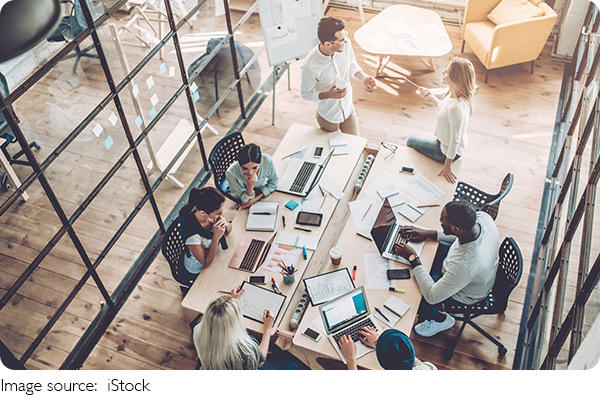Cool Workspace

When we talk about workspaces, we are not just referring to a place where we do our jobs. A workspace is where we spend a significant portion of our day, so the design of that space can have a major impact on our productivity, creativity, and overall well-being.
Whether it’s a home office, a corporate setting, or a co-working space, the design should cater to the needs of the people who use it, promoting focus, collaboration, and comfort.
Luxury Office Design Ideas Make Your Workspace Stunning | Fixing Expert
video by Fixing Expert
Creating a Productive Environment
At the heart of any well-designed workspace is productivity. A cluttered, uncomfortable, or poorly designed environment can lead to distractions and inefficiency. On the other hand, a thoughtfully arranged space can help us stay organized, focused, and energized throughout the day.
Good workspace design includes providing adequate lighting, ergonomic furniture, and clear organizational systems. Natural light, in particular, has been shown to enhance mood and energy levels, so having windows that allow plenty of sunlight can make a significant difference. Ergonomic chairs and desks that suit individual needs prevent physical strain, which can lead to long-term discomfort.
The Role of Flexibility in Workspace Design
A one-size-fits-all approach doesn’t work for workspaces anymore. Flexibility has become a key design principle. With different tasks and different types of work, the ability to modify the workspace is essential. Whether it's having the option to switch between sitting and standing, creating areas for focused work, or spaces for collaboration, flexibility helps employees meet the varying demands of their tasks.
This can be achieved through movable furniture, adjustable desks, and multi-purpose spaces. In an office environment, for instance, creating different zones—such as quiet areas for deep work and open spaces for meetings or teamwork—gives employees the freedom to choose the most appropriate environment for the task at hand.
Incorporating Personalization into the Workspace
Personalization in a workspace can make the environment feel more welcoming and inspire creativity. When employees are allowed to add their personal touches, such as photos, plants, or artwork, it creates a sense of ownership and connection to the space. Personalized touches can also contribute to a positive and motivating atmosphere, which can help individuals feel more comfortable and less stressed.
However, it’s essential to strike the right balance. Too much clutter can lead to distraction, while minimalistic designs can feel sterile or uninspiring. The goal is to create a space that’s both functional and comforting.

Collaborative Spaces for Teamwork
Collaboration is often at the heart of many modern workplaces. Creating spaces where team members can easily come together to brainstorm, problem-solve, and work on projects is crucial. These areas should be designed with flexibility and comfort in mind—think comfortable seating, writable surfaces, and technology that makes it easy to share ideas and collaborate in real time.
In open offices or co-working environments, creating designated collaboration areas allows employees to come together without disrupting others who may need to focus. Incorporating a variety of seating options, from informal lounge chairs to collaborative tables, fosters spontaneous teamwork and creativity.
The Power of Color and Aesthetics
Colors can have a profound impact on mood and productivity in a workspace. Different colors evoke different emotional responses. For example, blue is often associated with calmness and focus, making it ideal for areas where concentration is key. On the other hand, bright colors like yellow or green can stimulate creativity and energy, making them perfect for brainstorming or collaboration areas.
Beyond color, the overall aesthetic of the workspace matters. A visually appealing environment, with a harmonious balance of furniture, textures, and accessories, can make employees feel more engaged and motivated. Design choices that incorporate natural elements like plants or wood finishes also contribute to a calming and inviting atmosphere.
Technology Integration for Efficiency
In today’s world, technology is a central part of the work experience. The design of a workspace must account for the seamless integration of technology to improve efficiency. This means ensuring that there are enough power outlets, USB ports, and charging stations, and that the layout supports easy access to computers, printers, and other tech tools.
Smart technologies, such as automated lighting or climate control systems, can help optimize the workspace and make it more energy-efficient, creating an environment that enhances comfort without unnecessary distractions.
Designing for Well-Being and Success
Ultimately, the goal of workspace design is to create an environment that supports the well-being and success of those who use it. By carefully considering factors such as lighting, furniture, flexibility, personalization, and technology, we can design spaces that foster creativity, productivity, and collaboration.

We hope these tips inspire you to rethink your own workspace. Whether you’re working from home or in an office, taking the time to design a space that works for you can have a huge impact on your work experience. So, why not give your workspace a makeover and start reaping the benefits today?
Have you recently redesigned your workspace? What elements do you think are essential for a productive and inspiring environment? Share your thoughts with us!

 · Lifestyle Team
· Lifestyle Team